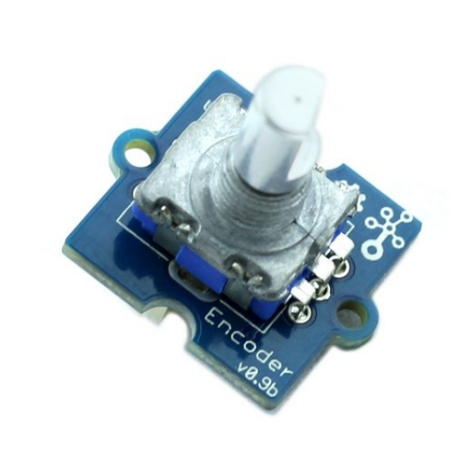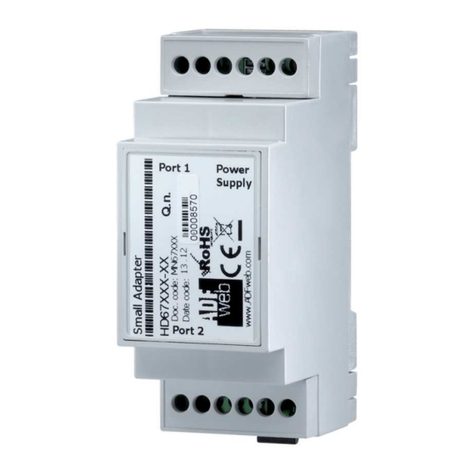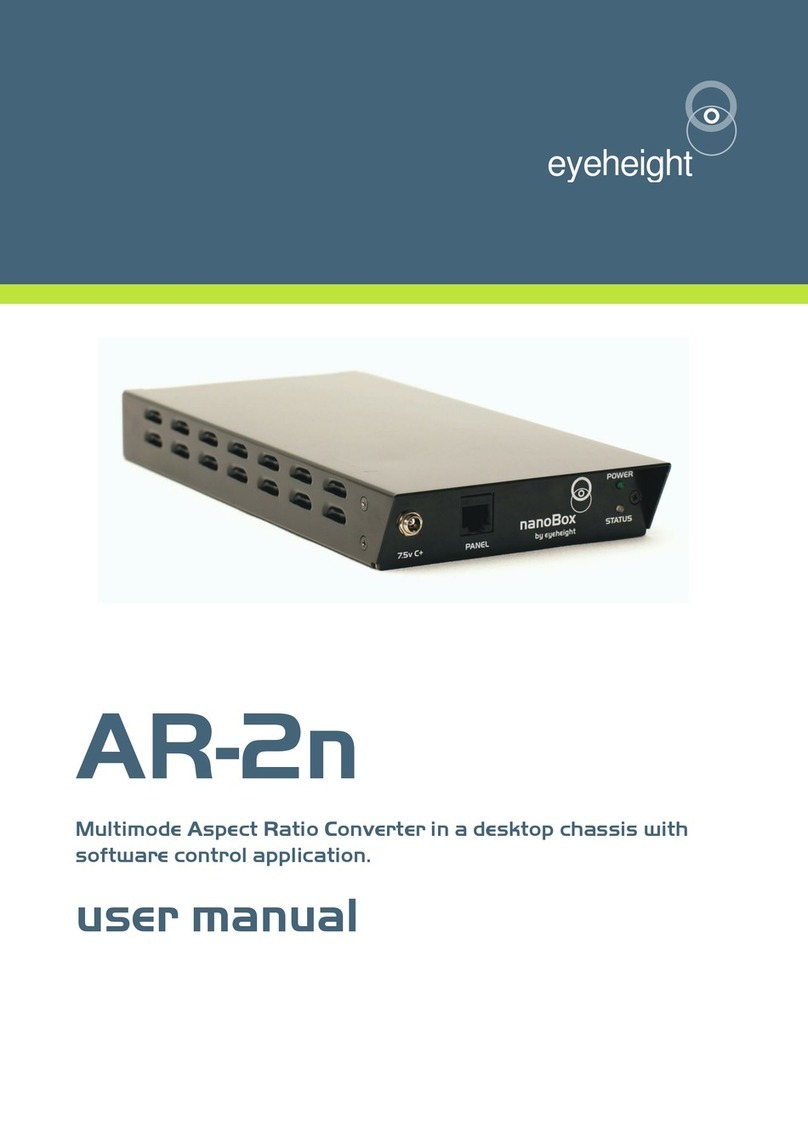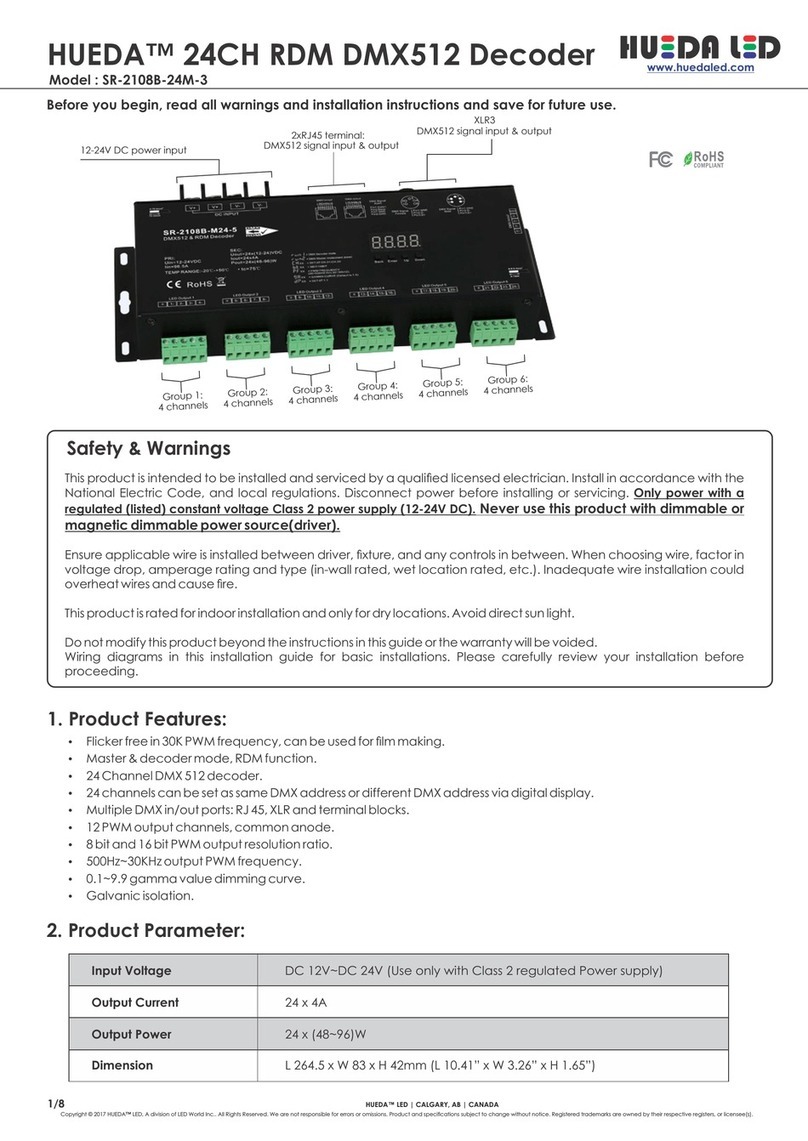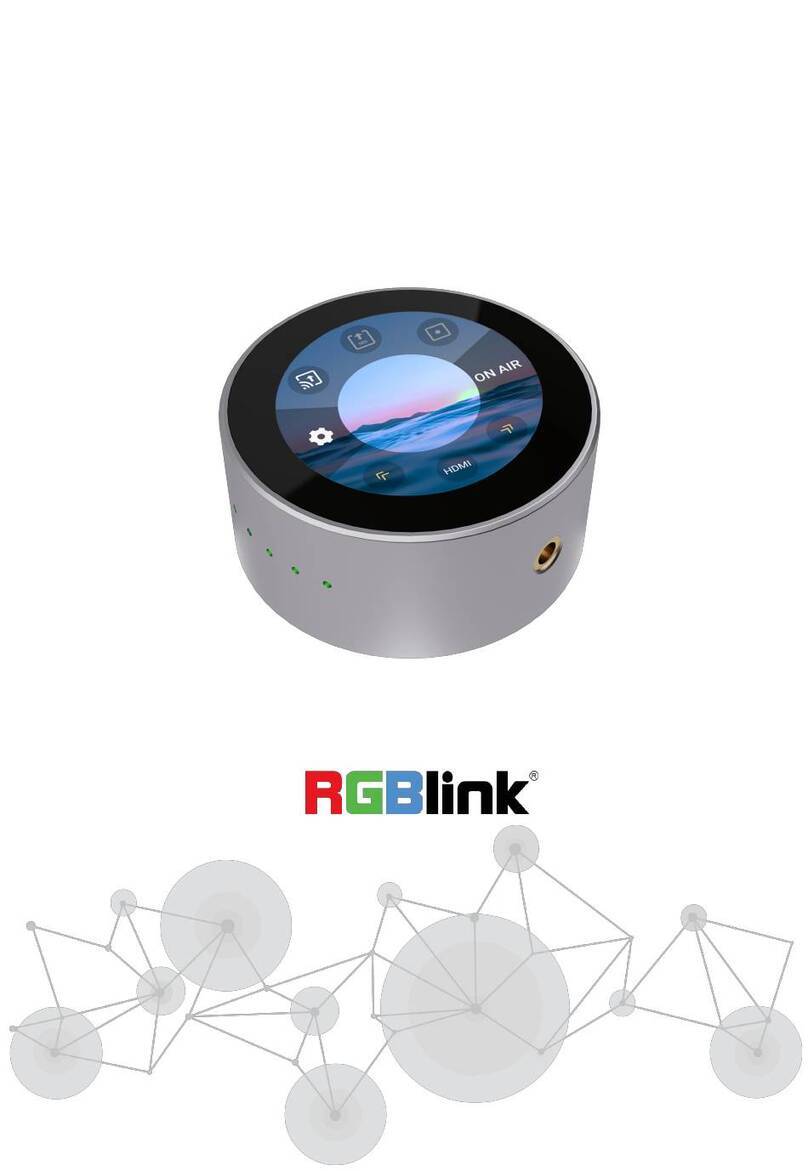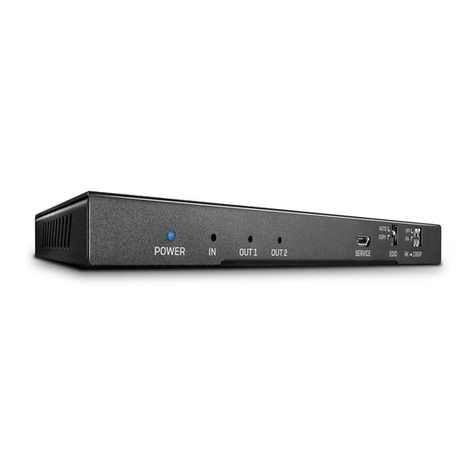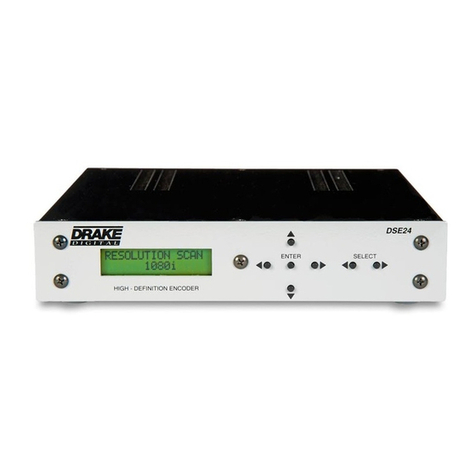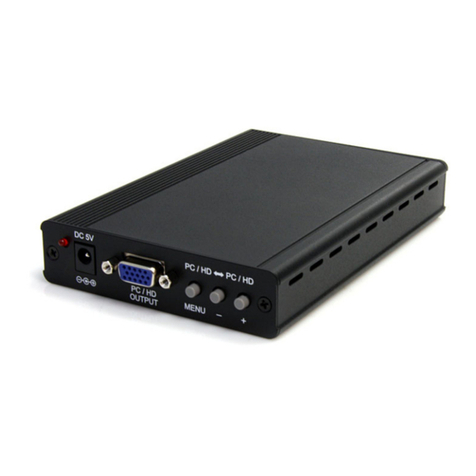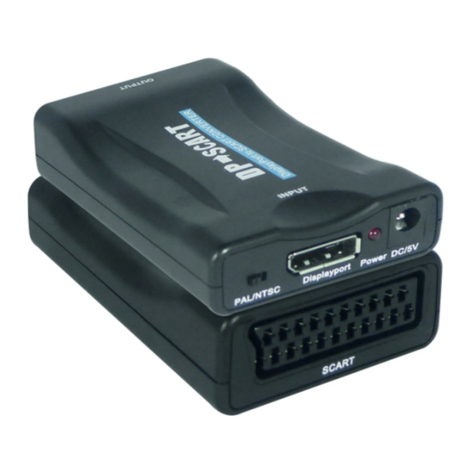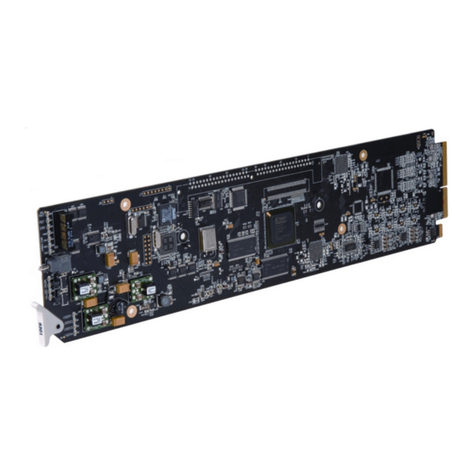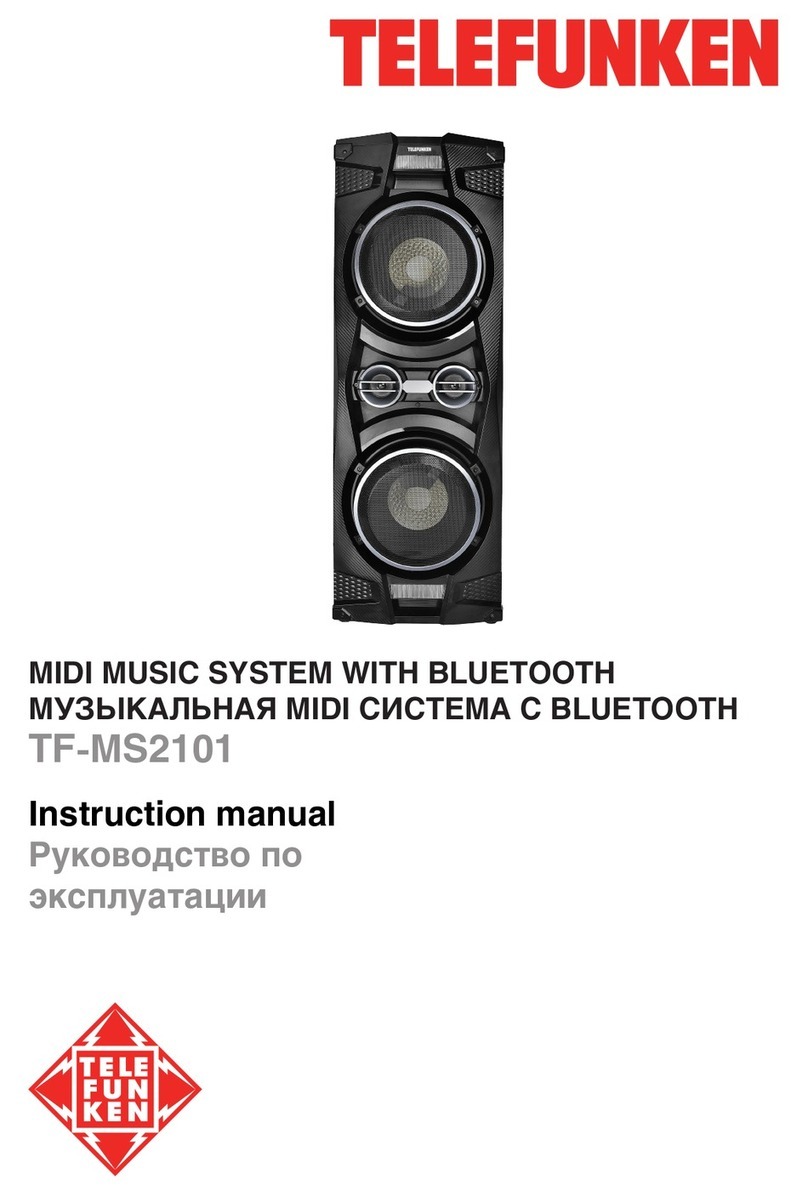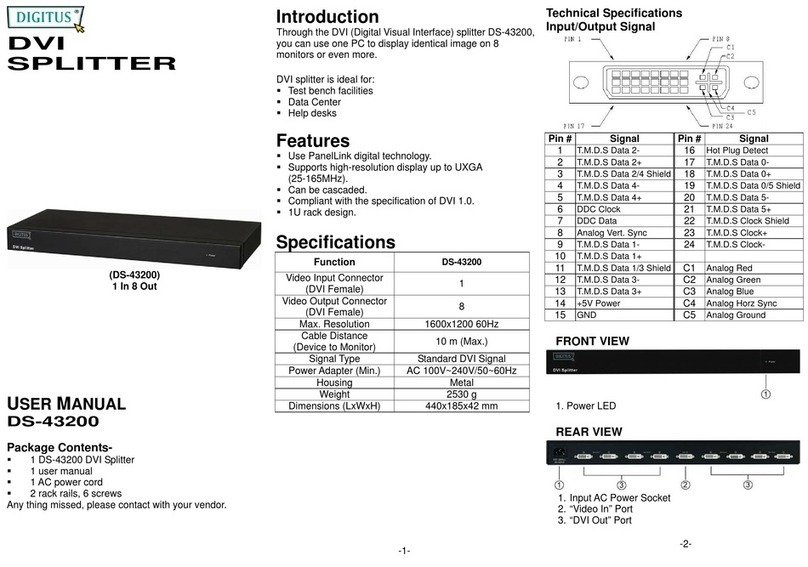NetSure UM1C48241500 User manual

NetSure™ DC/DC Converter Module
User Manual, UM1C48241500
Document Code: 11OC7908UP (Revision G, April 28, 2017)
Specification Number: 1C48241500
Model Number: C48/24-1500

NetSure™ DC/DC Converter Module
User Manual, UM1C48241500 (11OC7908UP)
Spec. No: 1C48241500 Document Code: 11OC7908UP
Model No: C48/24-1500 Revision G, April 28, 2017
This page is intentionally blank.

NetSure™ DC/DC Converter Module
User Manual, UM1C48241500 (11OC7908UP)
Spec. No: 1C48241500 Document Code: 11OC7908UP
Model No: C48/24-1500 Revision G, April 28, 2017
[i]
Table of Contents
Admonishments Used in this Document ................................................................................................................ ii
Important Safety Instructions .............................................................................................................................. iii
General Safety ........................................................................................................................................................iii
Voltages .................................................................................................................................................................iii
Hazardous Voltage .................................................................................................................................................iii
Handling Equipment Containing Static Sensitive Components .................................................................................iii
Static Warning ..................................................................................................................................................... iv
Introduction ......................................................................................................................................................... 1
Overview ................................................................................................................................................................ 1
Specifications ......................................................................................................................................................... 1
DC Output Ratings ........................................................................................................................................... 1
DC Input Ratings.............................................................................................................................................. 1
Environmental Ratings ..................................................................................................................................... 2
Compliance Information .................................................................................................................................. 2
Standard Features ........................................................................................................................................... 2
Mechanical Specifications ................................................................................................................................ 3
Operation ............................................................................................................................................................. 4
Local Indicators ....................................................................................................................................................... 4
Converter High Voltage Shutdown and Lockout Restart ........................................................................................... 4
Converter Current Limit .......................................................................................................................................... 4
Installing Converter Modules .................................................................................................................................. 5
Troubleshooting and Repair .................................................................................................................................. 5
Troubleshooting ..................................................................................................................................................... 5
Converter Module Current Sharing Imbalanced ................................................................................................ 5
Converter Module Fault Symptoms and Troubleshooting ................................................................................. 6
Replacement Procedures ........................................................................................................................................ 7
Converter Module Replacement ...................................................................................................................... 7

NetSure™ DC/DC Converter Module
User Manual, UM1C48241500 (11OC7908UP)
Spec. No: 1C48241500 Document Code: 11OC7908UP
Model No: C48/24-1500 Revision G, April 28, 2017
[ii]
Admonishments Used in this Document
DANGER!
Warns of a hazard the reader will be exposed to that will likely result in death or serious injury
if not avoided. (ANSI, OSHA)
WARNING!
Warns of a potential hazard the reader may be exposed to that could result in death or
serious injury if not avoided. This admonition is not used for situations that pose a risk only to
equipment, software, data, or service. (ANSI)
CAUTION!
Warns of a potential hazard the reader may be exposed to that could result in minor or
moderate injury if not avoided. (ANSI, OSHA) This admonition is not used for situations that pose a risk
only to equipment, data, or service, even if such use appears to be permitted in some of the applicable
standards. (OSHA)
ALERT!
Alerts the reader to an action that must be avoided in order to protect equipment, software,
data, or service. (ISO)
ALERT!
Alerts the reader to an action that must be performed in order to prevent equipment damage,
software corruption, data loss, or service interruption. (ISO)
FIRE SAFETY!
Informs the reader of fire safety information, reminders, precautions, or policies, or of the
locations of fire
-fighting and fire-safety equipment. (ISO)
SAFETY!
Informs the reader of general safety information, reminders, precautions, or policies not related
to a particular source of hazard or to fire safety. (ISO, ANSI, OSHA)
Danger
Warning
Caution
Alert
Alert
Fire Safety
Safety

NetSure™ DC/DC Converter Module
User Manual, UM1C48241500 (11OC7908UP)
Spec. No: 1C48241500 Document Code: 11OC7908UP
Model No: C48/24-1500 Revision G, April 28, 2017
[iii]
Important Safety Instructions
General Safety
DANGER!
YOU MUST FOLLOW APPROVED SAFETY PROCEDURES.
Performing the following procedures may expose you to
hazards. These procedures should be performed by
qualified technicians familiar with the hazards
associated with this type of equipment. These hazards
may include shock, energy, and/or burns. To avoid
these hazards:
a) The tasks should be performed in the order
indicated.
b) Remove watches, rings, and other metal objects.
c) Prior to contacting any uninsulated surface or
termination, use a voltmeter to verify that no
voltage or the expected voltage is present. Check
for voltage with both AC and DC voltmeters prior to
making contact.
d) Wear eye protection.
e) Use certified and well maintained insulated tools.
Use double insulated tools appropriately rated for
the work to be performed.
Voltages
DC Input Voltages
DANGER! This system operates from DC input voltage.
Although the DC voltage is not hazardously high, the
input power can deliver large amounts of current.
DC Output and Battery Voltages
DANGER! This system produces DC power and may
have a battery source connected to it. Although the DC
voltage is not hazardously high, the converters and/or
battery can deliver large amounts of current. Exercise
extreme caution not to inadvertently contact or have
any tool inadvertently contact an output terminal or
battery terminal or exposed wire connected to an
output terminal or battery terminal. NEVER allow a
metal object, such as a tool, to contact more than one
termination or battery terminal at a time, or to
simultaneously contact a termination or battery
terminal and a grounded object. Even a momentary
short circuit can cause sparking, explosion, and injury.
Hazardous Voltage
DANGER! Hazard of electrical shock. More than one
disconnect may be required to de-energize the system
before servicing.
Handling Equipment Containing
Static Sensitive Components
ALERT! Installation or removal of equipment containing
static sensitive components requires careful handling.
Before handling any equipment containing static
sensitive components, read and follow the instructions
contained on the Static Warning Page.
Danger
Danger
Danger
Danger
Alert

NetSure™ DC/DC Converter Module
User Manual, UM1C48241500 (11OC7908UP)
Spec. No: 1C48241500 Document Code: 11OC7908UP
Model No: C48/24-1500 Revision G, April 28, 2017
[iv]
Static Warning
This equipment contains static sensitive components. The warnings listed below must be observed to prevent damage to these
components. Disregarding any of these warnings may result in personal injury or damage to the equipment.
1. Strictly adhere to the procedures provided in this document.
2. Before touching any equipment containing static sensitive components, discharge all static electricity from yourself by wearing
a wrist strap grounded through a one megohm resistor. Some wrist straps, such as Vertiv Part Number 631810600, have a
built-in one megohm resistor; no external resistor is necessary. Read and follow wrist strap manufacturer’s instructions
outlining use of a specific wrist strap.
3. Do not touch traces or components on equipment containing static sensitive components.
Handle equipment containing static sensitive components only by the edges that do not have connector pads.
4. After removing equipment containing static sensitive components, place the equipment only on conductive or anti-static
material such as conductive foam, conductive plastic, or aluminum foil. Do not use ordinary Styrofoam™ or ordinary plastic.
5. Store and ship equipment containing static sensitive components only in static shielding containers.
6. If necessary to repair equipment containing static sensitive components, wear an appropriately grounded wrist strap, work on a
conductive surface, use a grounded soldering iron, and use grounded test equipment.

NetSure™ DC/DC Converter Module
User Manual, UM1C48241500 (11OC7908UP)
Spec. No: 1C48241500 Document Code: 11OC7908UP
Model No: C48/24-1500 Revision G, April 28, 2017
[1]
Introduction
Overview
The C48/24-1500 is a compact DC/DC converter which offers
efficient power conversion. It operates from a nominal -48 VDC
source to provide nominal +24 VDC load power.
Specifications
DC OUTPUT RATINGS
•
Voltage:
Nominal +24 volts DC, negative ground.
Output voltage is adjustable from 24 to 28 volts DC via
the associated controller.
•
Nameplate Rating:
24 to 28 VDC, 1500W.
•
Regulation:
a.
Output Voltage Tolerance:
< ±0.2% when the load is
50% and the temperature is from +15 to +35°C;
< ±0.5% when the load is 50% and the temperature is
from -5 to +55°C; < ±1% when the load is 50% and
the temperature is from -20 to +55°C.
b.
Temperature Regulation:
< ±0.02% when the load is
50% at -48 VDC and temperature range is from -10°C
to +55°C.
c.
Dynamic Response:
The dynamic response time at
rated input and output voltage is ≤ 200us and
overshot ≤ 5% for load changes at 50%-25%-50% and
50%-75%-50%.
d. The output voltage is accurate at half load. At half
load, the error of output voltage is ≤ ±100mV. Static
regulation will give other voltage depending on load.
The default value at half load is 27 VDC.
•
Filtering:
a. Peak-peak voltage is ≤ 250mV at 1-100MHz and
normal output voltage.
b. Psophemetic noise voltage is ≤ 2mV between
5-100% of the maximum load (output voltage > 24
VDC).
c. Wideband noise is < 20mV rms between
25HZ-20kHz (test according to ETS300132).
d. Output noise according to Telcordia GR-947-CORE:
< 38 dBrnC (between 5-100% of the maximum load,
output voltage > 24 VDC).
•
Ripple Attenuation:
Ripple attenuation is better than
+24dB, input to output and f < 360Hz.
DC INPUT RATINGS
•
Voltage:
Nominal -48 volts DC.
•
Nameplate Rating:
-41 to -58.5 VDC, 39.5A max.
•
Inrush Current:
The peak value of the inrush current does
not exceed 2 times the maximum steady-state peak
value.
•
Input Regulation:
≤ ±0.1% when the load is 100% at -42
to -58.5 VDC input and temperature is +25°C.
•
Temperature Coefficient:
≤ ±0.02%/°C over the specified
operating temperature range.
•
Typical Input Data:
When equipped with one DC-DC
converter.
a. See Table 1.
b.
Maximum Current:
Input current is 39.5 amperes
at -41.0 volts DC input and full load.
Table 1. Typical Input Data
Input
Voltage
Percent
of Full
Load
Input
Current
(Amps)
Efficiency
(%)
Typical Heat
Dissipation
(BTU/Hr)
42 VDC
0
0.125
--
18.02
25
9.388
95.661
58.28
50
18.803
95.416
122.84
75
28.714
94.217
235.77
100
38.888
92.835
394.06
48 VDC
0
0.122
--
20.02
25
8.218
95.516
60.33
50
16.431
95.336
125.12
75
25.055
94.181
237.34
100
33.887
92.800
396.04
58 VDC
0
0.105
--
20.93
25
6.811
95.286
63.55
50
13.601
95.141
130.57
75
20.713
94.049
243.05
100
27.987
92.689
402.69
NOTE:
The output voltage of the DC-DC converter is
initially adjusted to 24 volts DC at 50% load and 48 volts
DC input.

NetSure™ DC/DC Converter Module
User Manual, UM1C48241500 (11OC7908UP)
Spec. No: 1C48241500 Document Code: 11OC7908UP
Model No: C48/24-1500 Revision G, April 28, 2017
[2]
ENVIRONMENTAL RATINGS
•
Operation Temperature Range:
-40°C to +80°C (-40°F to
+176°F), -20°C to +55°C (-4°F to +131°F) with full
performance.
•
Storage Ambient Temperature Range:
-40°C to +70°C
(-40°F to +158°F).
•
Humidity:
This converter is capable of operating in an
ambient relative humidity range of 0 to 90%, non-
condensing.
•
Altitude:
The maximum operating ambient temperature
should be derated by 3°C per 1000 feet at an elevation of
6,000 feet.
•
Ventilation Requirements:
The converter is fan cooled
and utilizes front to back forced ventilation.
•
Audible Noise:
With a single converter installed and
operating, the audible noise measured in front of
converter at a 0.6m distance from a horizontal line from
the middle of converter does not exceed 50 dBA with a
temperature of 25°C.
•
Over Voltage Category:
II.
•
Power Distribution System:
TN/TT/IT.
NOTE:
The converter is recommended to be used in an
environment with Pollution of Degree 2 or less. Pollution
Degree 2 applies where there is only non-conductive
pollution that might temporarily become conductive due
to occasional condensation (such as the office
environment).
COMPLIANCE INFORMATION
•
Safety Compliance:
This unit meets the requirements of
UL 60950-1, Standard for Information Technology
Equipment, and is UL Recognized as a power supply for
use in Telephone, Electronic Data Processing or
Information Processing Equipment.
•
EMC:
This unit meets EN300 386 V1.51, Class A, other
than Telecom centers.
•
EFT:
This unit meets EN61000-4-4, EFT will be fulfilled for
DC terminals at 4KV (CM) with criteria B and signal line at
1KV (CM) with criteria B.
•
ESD:
This unit meets EN61000-4-2; requirements are
6KV contact and 8KV air for criteria B and 8KV/15KV for
criteria C.
•
Radiated Electrical Fields:
This unit meets EN61000-4-3.
10V/m in the frequency range 80MHZ-1GHz and
1.4-2GHz with criteria A will be fulfilled.
•
Power Frequency Magnetic Field:
This unit meets
EN61000-4-8. 30A/m magnetic field at 50Hz will be
fulfilled for criteria A.
•
Radiated Emission:
For electrical field, meets EN55022
Class A between 150KHZ-30MHZ. For a standalone
converter the levels are 6db below the class A limits.
•
Climatic Environment:
a.
Transportation:
Meets ETS 300 019-1-2, Class 2.3.
b.
Storage and Handling:
Meets ETS 300 019-1-1, Class
1.2.
c.
Operation:
Meets ETS 300 019-1-3, Class3.2.
d.
Transportation, Storage and Handling, Operation:
Meets Telcordia GR-63-Core, Chapter 4.
•
GR-3108 Class 2 Compliant
STANDARD FEATURES
•
Type of Power Conversion Circuit:
High Frequency.
•
Input Voltage Protection:
a.
Fusing:
A non-user replaceable fuse is located in the
positive input lead of each DC-DC converter.
b.
High and Low Input Voltage Inhibit:
The converter
shuts down at low or high input voltage.
1.
Low Voltage Disable Point:
-40.0 VDC ±0.5
VDC; hysteretic at least 3 VDC for restart.
2.
High Voltage Disable Point:
59.5 VDC ±0.5
VDC; hysteretic at least 2 VDC for start.
•
Output Protection:
a.
Overvoltage Protection:
When output voltage goes
above a preset value (30.5±0.5V, not to exceed 31V
for more than 150ms), the converter shuts down.
Software settable HVSD level (from controller)
27V-30V.
b.
Power Limit:
Output power is limited to 1500W.
c.
Over Temperature Protection:
The operation of a
DC-DC converter will automatically shut down and
lock out if the internal temperature of the module
exceeds a predetermined value. Operation will
automatically resume after the over-temperature
condition is corrected.

NetSure™ DC/DC Converter Module
User Manual, UM1C48241500 (11OC7908UP)
Spec. No: 1C48241500 Document Code: 11OC7908UP
Model No: C48/24-1500 Revision G, April 28, 2017
[3]
•
Series Paralleling Output FET:
A series paralleling output
FET is provided in each DC-DC converter. This allows the
modules to be paralleled for redundancy.
•
Hot Swappable:
The converter is designed to be plug-
and-play. The converter can be inserted or removed
from a live DC power system with no damage. When the
converter is plugged into the system, the sub-system
output voltage will not be affected.
•
Cooling:
Each converter contains a fan for forced
convection cooling.
a.
Fan Fault Protection:
The converter shuts down and
its alarm indicator (red) flashes if the fan fails. Fan
failure is detected and reported to controller. The
fan is not field replaceable.
b.
Fan Control:
Fan speed is continuously variable.
When input voltage is within normal range, the built-
in processor adjusts fan speed according to the
converter’s output power. For example, a higher
output power increases the fan speed.
•
Communication Failure:
The protection indicator
(yellow) will flash should communication between the
converter and associated system controller fail. The
failure information will be reported to the associated
system controller and the controller will process the
failure accordingly. During a communication failure, the
converter output voltage will automatically adjust to
24.00 VDC. The converter will revert to normal operation
once normal communication is restored.
•
Monitoring Function:
The converter has a built-in
advanced DSP (Digital Signal Processor) that monitors
and controls the operation of the converter. The DSP
also communicates with the associated system controller
in real time through the CAN bus. Table 2 lists the
different commands and information exchanged
between the converter and the controller.
•
External Alarm:
Provided via the associated controller.
Refer to the separate Power System documentation for a
description of available external alarms.
Table 2. Monitoring Function
Commands / signals that can
be received by the Converter
Module from the Controller.
Information gathered by the
Controller from the Converter
Module.
•Turn On/Off
•HVSD Reset
•Current Limit Adjustment
•Voltage Adjustment
•Fan Speed Control
Enable/Disable
•HVSD Threshold
•Output Voltage
•Output Current
•Current Limit Setting
•Temperature
•Over Voltage Setting
•On/Off Status
•Fault Alarms, such as:
HVSD
Fan Fail
•EEPROM Failure
•Protection Alarms, such as:
Input Voltage Protection
High Temperature Protection
•Thermal Derating
•Address
•Code
•Date
•Software Version
•Hardware Version
•Imbalance Output Current
MECHANICAL SPECIFICATIONS
•
Weight:
1.13kg (2.49 lbs).
•
Dimensions (H x W x D):
1.65” (42mm) x 3.33” (84.5mm)
x 10.2” (260mm).
•
Local Controls:
None.
•
Local Status and Alarm Indicators:
a. Power (Green)
b. Protection (Yellow)
c. Alarm (Red)

NetSure™ DC/DC Converter Module
User Manual, UM1C48241500 (11OC7908UP)
Spec. No: 1C48241500 Document Code: 11OC7908UP
Model No: C48/24-1500 Revision G, April 28, 2017
[4]
Operation
Local Indicators
Location and Identification:
Refer to Figure 1.
Description:
There are three (3) indicators located on the
converter’s front panel. The functions of these indicators are as
shown in Table 3.
NOTE:
DC voltage must be present at the converter
output terminals (from battery or an operating
converter) or DC voltage at the input terminals.
Converter High Voltage Shutdown and Lockout
Restart
Procedure
Remove the converter, wait 30 seconds or more (until the LEDs on
the converter extinguish), then re-insert the converter.
The converter may also be restarted from the controller. Refer to
the controller’s documentation.
Converter Current Limit
When setting total converter current limit, the set point to each
converter is the total set point divided by the number of
converters. For example, if the system contains five converters
and the current limit is set to 150 amps then each converter has a
current limit set point of 30 amps. If one or more converters are
removed or fail it will take several seconds for the individual set
points to the remaining converters to be reset. In the example
given, if one converter is removed the current limit set point will
drop to 120 amps (30 amps times four remaining converters) until
the controller can send updated set points to the remaining
converters. This takes a couple communication cycles (several
seconds) after which each converter would have a new set point of
37.5 amps for a total of 150 amps. The total current limit of the
converters should not be set such that the loss of the redundant
converters will cause this temporary set point to drop below the
actual maximum expected load.
Figure 1. Local Indicator Locations
Table 3. DC-DC Converter Indicators
Indicator Normal State Alarm State Alarm Cause
Power
(Green) On Off No input voltage.
Internal input fuse open.
Flashing The converter is being identified by the controller.
Protection
(Yellow) Off
On
DC input under/over voltage.
Moderate load sharing imbalance.
Converter not inserted into the slot completely.
Converter over-temperature protection.
Converter in ECO Standby Mode when ECO Mode is
active in controller.
Flashing Loss of communication with the controller (the
converter can provide power).
Alarm
(Red) Off On
Severe load sharing imbalance.
Converter output disabled for any reason, including
overvoltage shutdown.
Converter addresses contradictory.
Flashing Faulty fan (converter shuts down).
Protection Indicator (Yellow)
Alarm Indicator (Red)
Power Indicator (Green)

NetSure™ DC/DC Converter Module
User Manual, UM1C48241500 (11OC7908UP)
Spec. No: 1C48241500 Document Code: 11OC7908UP
Model No: C48/24-1500 Revision G, April 28, 2017
[5]
Installing Converter Modules
Converters can be inserted or removed with power applied (hot
swappable).
NOTE:
Each converter locks into a module mounting
shelf by means of a latch located on the bottom of the
module. The latch and converter handle are interactive.
Pushing the handle up into the module’s front panel
causes the latch to extend to the locking position; pulling
the handle down out from the module’s front panel
causes the latch to retract. See Figure 2.
CAUTION!
This converter contains Double pole/Neutral
fusing; parts of the equipment that remain energized
might represent a hazard during servicing after
operation of the fuse.
WARNING! To prevent damage to the latching
mechanism, ensure the handle is in the open position
when installing or removing a converter. NEVER hold
the handle in the closed position when installing a
converter into a shelf.
Procedure
NOTE:
Refer to Figure 2 as this procedure is performed.
1. Unpack the module.
2. Place the module into an unoccupied mounting slot
without sliding it in completely.
3. Loosen the captive screw on the module’s handle. Pull
the handle down out from the module’s front panel (this
will also retract the latch mechanism). See Figure 2.
4. Push the module completely into the shelf.
5. Push the handle up into the module’s front panel. This
will lock the module securely to the shelf. Tighten the
captive screw on the handle.
6. Repeat the above steps for each converter being installed
in the system.
7. After the converters are physically installed in the
mounting shelf(s), they are ready for operation
immediately after power is supplied to them.
8. Certain functions (i.e. converter current limit, converter
addressing) may require adjustment when adding or
replacing a converter. Refer to “Converter Current Limit”
on page 4 and the Power System documentation for
instructions.
Figure 2. Installing Converter Module
Troubleshooting and Repair
Troubleshooting
CONVERTER MODULE CURRENT SHARING IMBALANCED
When multiple converters are operating in parallel and the load is
greater than 10%, if the current sharing imbalance among them is
greater than 2A, check if the converter is properly seated in the
shelf.
If the current sharing imbalance still persists following the
verification suggested above, replace the converter exhibiting the
current imbalance.
Captive Screw
Latch
Handle
Warning
Caution

NetSure™ DC/DC Converter Module
User Manual, UM1C48241500 (11OC7908UP)
Spec. No: 1C48241500 Document Code: 11OC7908UP
Model No: C48/24-1500 Revision G, April 28, 2017
[6]
CONVERTER MODULE FAULT SYMPTOMS AND TROUBLESHOOTING
The fault indicators that can be displayed by the converter are as follows.
Refer to Table 4 for a list of possible causes and corrective actions.
•Power Indicator (Green) OFF
•Protection Indicator (Yellow) ON
•Protection Indicator (Yellow) Flashing
•Alarm Indicator (Red) ON
•Alarm Indicator (Red) Flashing
Table 4. Converter Module Troubleshooting
Symptom Possible Cause(s) Suggested Action(s)
Power Indicator
(Green) Off
No input voltage. Make sure there is input voltage.
Internal input fuse open. Replace the converter.
Protection
Indicator
(Yellow) On
DC input under/over
voltage.
Correct the DC input voltage to within the acceptable
range.
Moderate load sharing
imbalance.
Check if the converter is properly seated in the shelf. If
this does not correct the fault, replace the converter.
Converter not inserted into
the slot completely. Remove and properly insert the converter.
Converter over-
temperature protection.
Fan rotor blocked: remove any object that may be
blocking the fan.
Ventilation blocked (inlet or outlet): remove any object
that may be blocking the inlet or outlet.
Ambient temperature too high or rectifier inlet too
close to a heat source: lower the ambient temperature
or relocate the heat source.
Converter in ECO Standby
Mode when ECO Mode is
active in controller.
--
Protection
Indicator
(Yellow)
Flashing
Loss of communication
with controller (the
converter can provide
power).
Check the communication cables.
Remove and properly insert the converter.
Alarm
Indicator
(Red) On
Severe load sharing
imbalance.
Converter output disabled
for any reason, including
overvoltage shutdown.
Remove the converter, wait 30 seconds or more (until
the LEDs on the converter extinguish), then re-insert the
converter. If converter fails to start, shuts down again,
or load sharing imbalance persists; replace the
converter.
Converter addresses
contradictory. Replace the converter.
Alarm Indicator
(Red) Flashing
Fan not operating
(converter shuts down). Replace the converter.

NetSure™ DC/DC Converter Module
User Manual, UM1C48241500 (11OC7908UP)
Spec. No: 1C48241500 Document Code: 11OC7908UP
Model No: C48/24-1500 Revision G, April 28, 2017
[7]
Replacement Procedures
CONVERTER MODULE REPLACEMENT
Converters can be inserted or removed with power applied (hot
swappable).
NOTE:
Each converter locks into a module mounting
shelf by means of a latch located on the bottom of the
module. The latch and converter handle are interactive.
Pushing the handle up into the module’s front panel
causes the latch to extend to the locking position; pulling
the handle down out from the module’s front panel
causes the latch to retract. See Figure 2.
DANGER!
Take care when removing a converter that
was in operation, as converter surfaces could be very
hot.
WARNING! To prevent damage to the latching
mechanism, ensure the handle is in the open position
when installing or removing a converter. NEVER hold
the handle in the closed position when installing a
converter into a shelf.
Procedure
NOTE:
Refer to Figure 2 as this procedure is performed.
1. Performing this procedure may activate external alarms.
Do one of the following. If possible, disable these alarms.
If these alarms cannot be easily disabled, notify the
appropriate personnel to disregard any alarms associated
with this system while this procedure is performed.
2. Loosen the captive screw on the module’s handle. Pull
the handle down out from the module’s front panel (this
will also retract the latch mechanism). See Figure 2.
3. Grasp the handle and pull firmly to remove the module
from the shelf.
4. Place the replacement converter into the mounting
position without sliding it in completely.
5. Loosen the captive screw on the module’s handle. Pull
the handle down out from the module’s front panel (this
will also retract the latch mechanism). See Figure 2.
6. Push the module completely into the shelf.
7. Push the handle up into the module’s front panel. This
will lock the module securely to the shelf. Tighten the
captive screw on the handle.
8. Certain functions (i.e. converter current limit, converter
addressing) may require adjustment when adding or
replacing a converter. Refer to “Converter Current Limit”
on page 4 and the Power System documentation for
instructions.
9. After the converters are physically installed in the
mounting shelf(s), they are ready for operation
immediately after power is supplied to them. Verify that
the converters are operating normally.
10. Enable the external alarms, or notify appropriate
personnel that this procedure is finished.
11. Ensure that there are no local or remote alarms active on
the system.
Warning
Danger

NetSure™ DC/DC Converter Module
User Manual, UM1C48241500 (11OC7908UP)
Spec. No: 1C48241500 Document Code: 11OC7908UP
Model No: C48/24-1500 Revision G, April 28, 2017
© 2017 Vertiv Energy Systems, Inc.
NetPerform™, NetReach™, NetSure™ and NetXtend™ are trademarks of Vertiv Energy Systems, Inc.
All other trademarks are the property of their respective owners. Specifications subject to change without notice.
The information contained in this document is subject to change without notice and may
not be suitable for all applications. While every precaution has been taken to ensure the
accuracy and completeness of this document, Vertiv Group Corporation assumes no
responsibility and disclaims all liability for damages resulting from use of this information
or for any errors or omissions. Refer to other local practices or building codes as applicable
for the correct methods, tools, and materials to be used in performing procedures not
specifically described in this document.
This document may contain confidential and/or proprietary information of Vertiv Group
Corporation, and its receipt or possession does not convey any right to reproduce, disclose
its contents, or to manufacture or sell anything that it may describe. Reproduction, disclosure,
or use without specific authorization from Vertiv Group Corporation is strictly prohibited.
Names of companies and products are trademarks or registered trademarks of the
respective companies. Any questions regarding usage of trademark names should be
directed to the original manufacturer.
Table of contents
